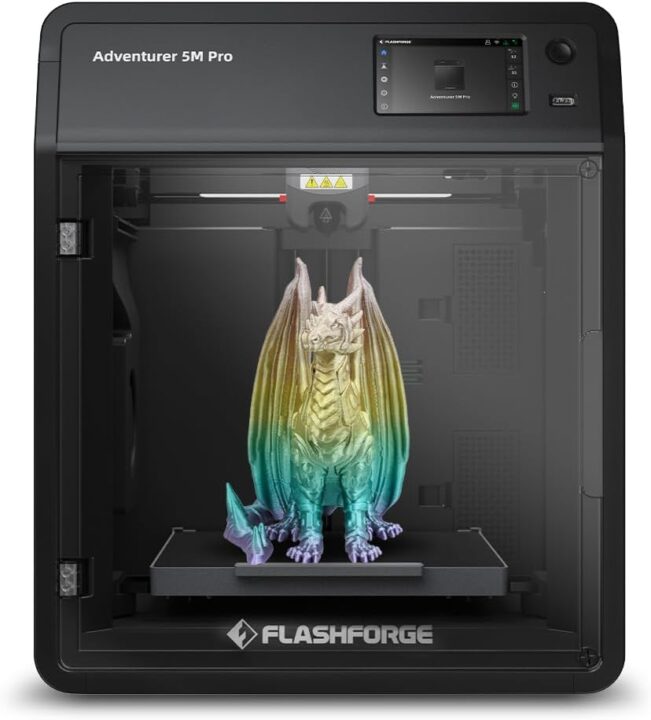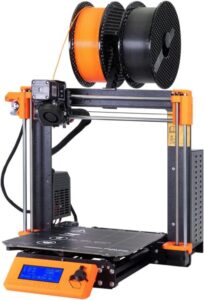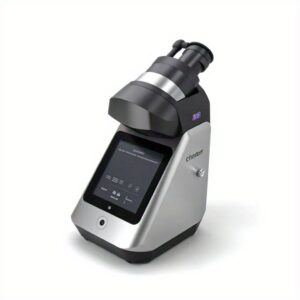Best 3D Printers for Automotive Parts

Creating automotive parts with 3D printers is a cost-effective and highly efficient method for prototyping and production. Whether you’re crafting brackets, engine components, or interior trims, a suitable 3D printer ensures precision and durability. Below, we highlight best 3D printers for Automotive parts, their features, and a detailed comparison table to help you make the best choice.
Comparison Table
Below is comparison chart for best 3D Printers for Automotive parts
| Scanner | Printing Technology | Ease of Use | Build Volume | Precision | Material Supported | Best For | |
|---|---|---|---|---|---|---|---|
 |
Prusa i3 MK3S 3D Printer | FDM | Remote monitoring, touchscreen interface | 9.84×8.3×8.3 inches | ±0.01 mm | PLA, ABS, Nylon, Carbon Fiber | Check Price |
 |
QIDI Q1 Pro 3D Printer | FDM | Wi-Fi connectivity, user-friendly touchscreen | 9.65×9.65×9.45 inches | ±0.05 mm | PLA, ABS, ASA, PETG, TPU, PA, PC, Carbon Fiber, Glass Fiber | Check Price |
 |
ANYCUBIC Photon Mono X 6Ks | Resin | Simple resin setup | 7.7 x 4.8 x 7.8 inches | High 6K | Standard, ABS-like, Flexible Resin | Check Price |
 |
FLASHFORGE Adventurer 5M Pro | FDM | Cloud-based printing, auto-bed leveling | 8.66 x 8.66 x 8.66 inches | ±0.1 mm | Batch printing | Check Price |
 |
Raise Pro2 3D Printer | FDM | Remote monitoring, touchscreen interface | 12 x 12 x 11. 8 inches | ±0.01 mm | PLA, ABS, PC, Carbon Fiber | Check Price |
Top 3 Picks for Best 3D Printers for Automotive Parts
1. Prusa i3 MK3S 3D Printer
“Best 3D Printers for Automotive Parts“

Key Features
-
Build Volume: 9.84×8.3×8.3 inches
-
Material Compatibility: PLA, ABS, Nylon, Carbon Fiber
-
Precision: ±0.01 mm
-
Special Features: Dual extrusion, HEPA air filtration
-
Ease of Use: Remote monitoring, touchscreen interface
The Prusa i3 MK4 is a versatile FDM 3D printer that combines robust build quality with exceptional material compatibility, making it a favorite among professionals. It is perfect for functional automotive components requiring strength and heat resistance, such as brackets or custom housings.
Advantages for Automotive Applications:
- Durable Components: Excels at producing functional, stress-bearing parts like mounts, brackets, and housings.
- Material Flexibility: The ability to print with engineering-grade filaments allows users to create professional-quality parts.
- Reliable and User-Friendly: Known for its consistent output and easy-to-follow documentation.
Limitations:
- Slightly higher cost compared to entry-level printers.
- Open-frame design means it’s less suitable for temperature-sensitive filaments like ABS without additional enclosures.
2. QIDI Q1 Pro
“Best 3D Printers for Automotive Parts“

Key Features
-
Build Volume: 9.65×9.65×9.45 inches
-
Material Compatibility: PLA, ABS, TPU, PETG
-
Precision: ±0.05 mm
-
Special Features: Enclosed chamber, dual platform (magnetic & glass)
-
Ease of Use: Wi-Fi connectivity, user-friendly touchscreen
The QIDI Q1 Pro is a compact yet highly capable 3D printer that excels in producing precise, small-to-medium automotive parts. Its enclosed design and dual-platform system make it a versatile tool for users who value ease of use and material flexibility.
Advantages for Automotive Applications:
- Compact and Efficient: Great for smaller components like clips, custom knobs, or sensor mounts.
- ABS Printing Made Easy: The enclosed chamber minimizes warping, a common issue when printing with ABS.
- Beginner-Friendly: With a touchscreen interface and clear instructions, it’s an excellent choice for users new to 3D printing.
Limitations:
- Limited build volume compared to larger printers.
- Lacks support for advanced engineering-grade materials like Carbon Fiber composites.
3. ANYCUBIC Photon Mono X 6Ks
“Best 3D Printers for Automotive Parts“

Key Features
-
Build Volume: 7.7 x 4.8 x 7.8 inches
-
Material Compatibility: Standard, ABS-like, flexible resin
-
Resolution: 6K LCD for ultra-sharp details
-
Special Features: Stable UV light source, fast printing speeds
-
Ease of Use: Simple resin setup
The ANYCUBIC Photon Mono X 6K is a high-resolution resin printer that stands out for its ability to deliver ultra-fine details, making it perfect for small, intricate automotive parts such as gear models, custom badges, and decorative trims.
Advantages for Automotive Applications:
- Detail-Oriented Production: Ideal for creating components that require a polished, professional look.
- Mold Making: Excellent for producing molds for small components or casting purposes.
- Precision Engineering: Can handle complex designs with tight tolerances, perfect for testing prototypes.
Limitations:
- Limited build volume restricts production to small parts.
- Resin printing involves post-processing (cleaning and curing), which can be time-consuming.
Also Read – Best 3D Printers for Miniatures
Conclusion
From compact printers like the QIDI Q1 Pro to large-scale, professional options such as the QIDI Q1 Pro, and now including the versatile ANYCUBIC Photon Mono X 6Ks, there’s a 3D printer for every automotive need. Assess your project requirements, material needs, and budget to find the perfect fit for your automotive endeavors.

With a degree in Electrical Engineering and years of hands-on experience in the tech industry, passionate to provide readers with insightful reviews. From smartphones and laptops to smart home devices and emerging technologies, he navigates the ever-evolving tech landscape, offering in-depth analyses and honest opinions.









